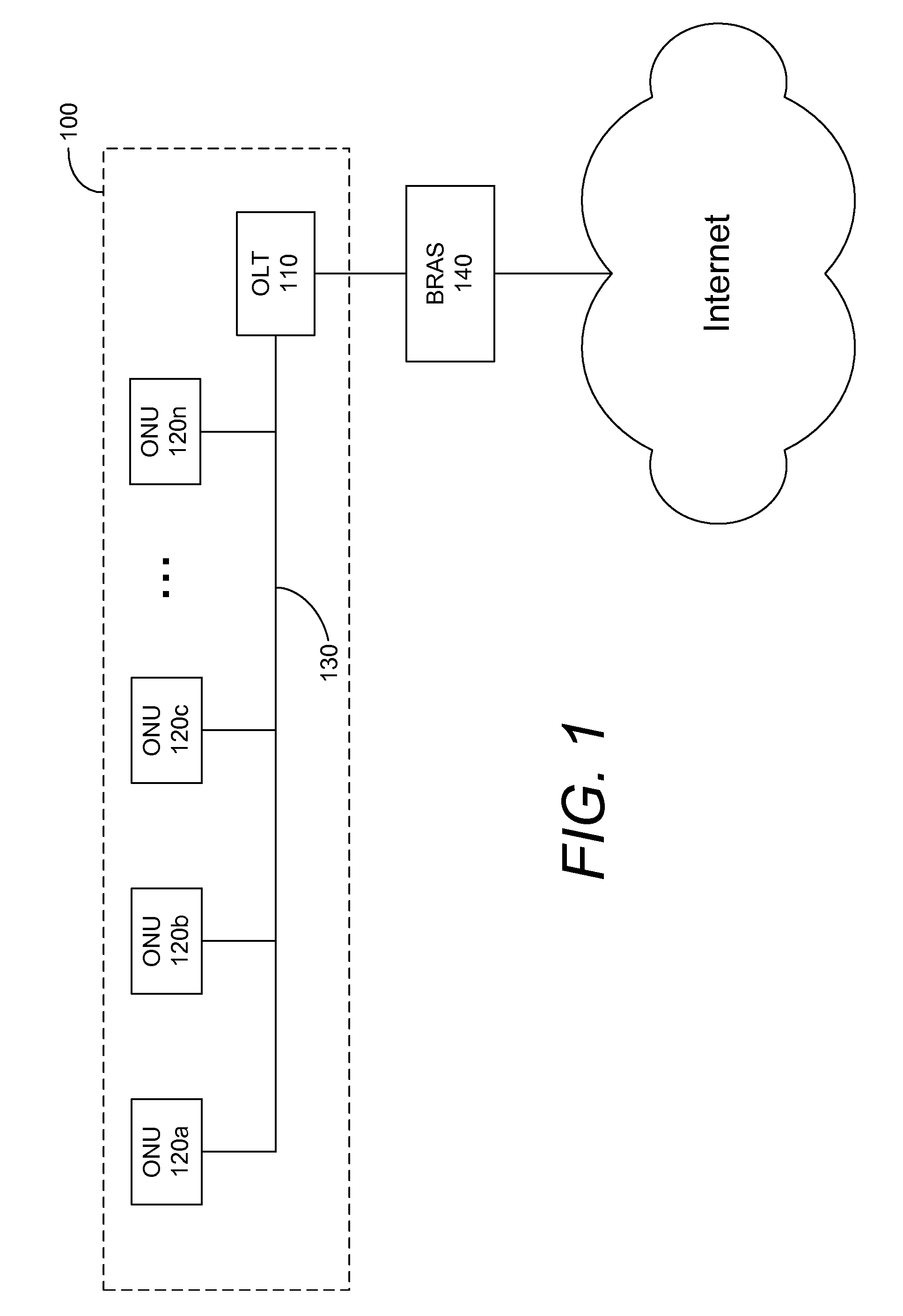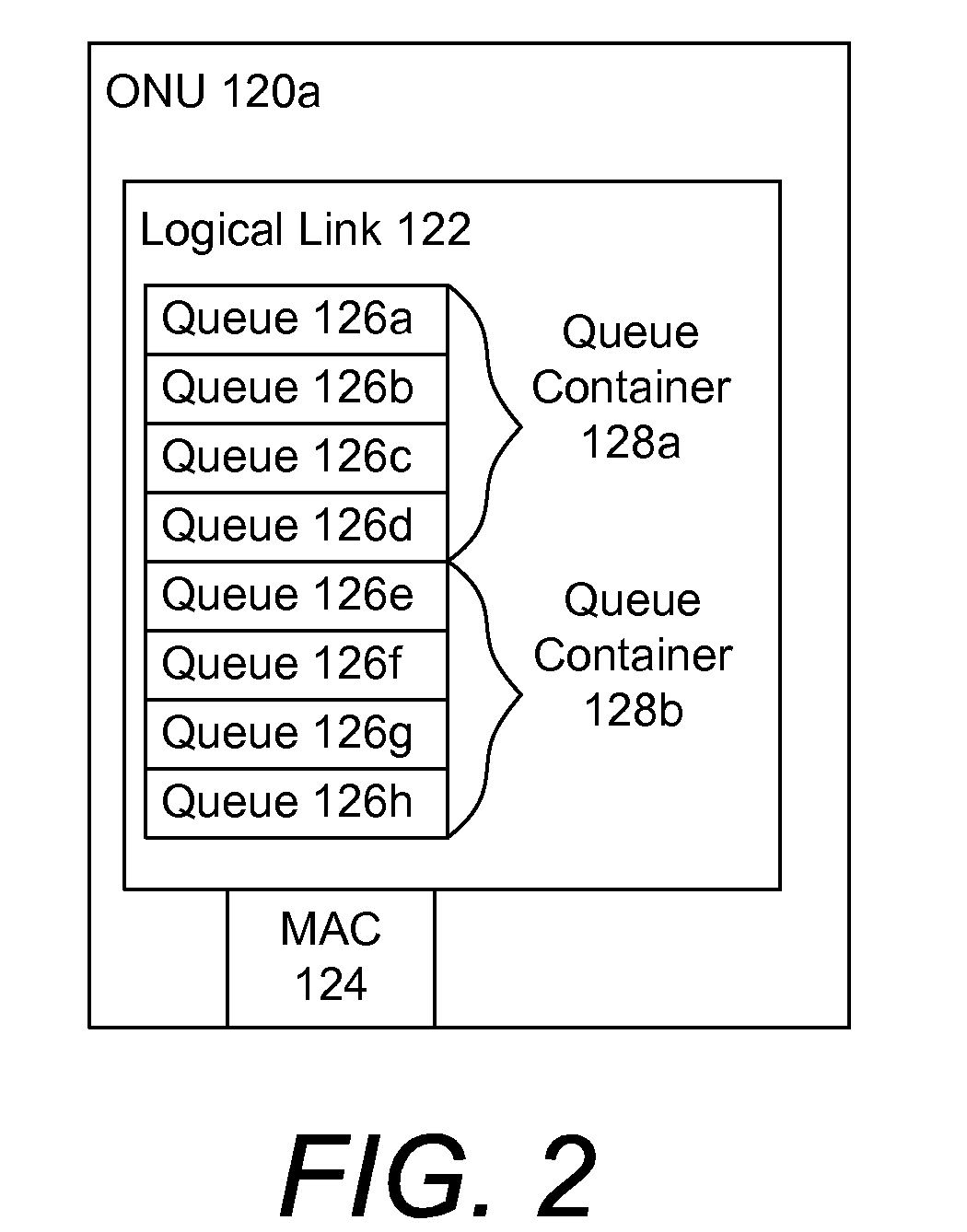Enhanced upstream data traffic management for EPON
a technology of upstream data and data traffic, applied in data switching networks, multiplex communication, digital transmission, etc., can solve the problems of insufficient service quality of epon subscribers, inefficient upstream bandwidth allocation, and traffic collision in upstream traffic, so as to achieve the effect of reducing the minimum bandwidth allocation and enhancing upstream data traffic managemen
- Summary
- Abstract
- Description
- Claims
- Application Information
AI Technical Summary
Benefits of technology
Problems solved by technology
Method used
Image
Examples
Embodiment Construction
Overview of System Architecture
[0021]Referring to FIG. 1, there is shown a block diagram illustrating the architecture of one embodiment of an EPON 100 with enhanced upstream data traffic management. The EPON 100 includes an OLT 110, multiple ONUs 120a-n, and an optical fiber 130. The EPON 100 is an Internet Service Provider (ISP) network, but it can be any other large scale network system.
[0022]In the EPON 100, the OLT 110 is connected to a number of ONUs 120a-n through passive optical components, such as optical fiber 130, splices (not shown), and splitters (not shown). The OLT 110 is also connected to a broadband remote access server (BRAS) 140 through a network, which may be a wired or wireless network. Examples of the network include the Internet, an intranet, a cellular network, or a combination thereof. The BRAS 140 is connected to the Internet.
[0023]The OLT 110 is a network-end Data Terminal Equipment (DTE) that connects the EPON 100 with external networks. The OLT 110 is ty...
PUM
 Login to View More
Login to View More Abstract
Description
Claims
Application Information
 Login to View More
Login to View More - R&D
- Intellectual Property
- Life Sciences
- Materials
- Tech Scout
- Unparalleled Data Quality
- Higher Quality Content
- 60% Fewer Hallucinations
Browse by: Latest US Patents, China's latest patents, Technical Efficacy Thesaurus, Application Domain, Technology Topic, Popular Technical Reports.
© 2025 PatSnap. All rights reserved.Legal|Privacy policy|Modern Slavery Act Transparency Statement|Sitemap|About US| Contact US: help@patsnap.com



